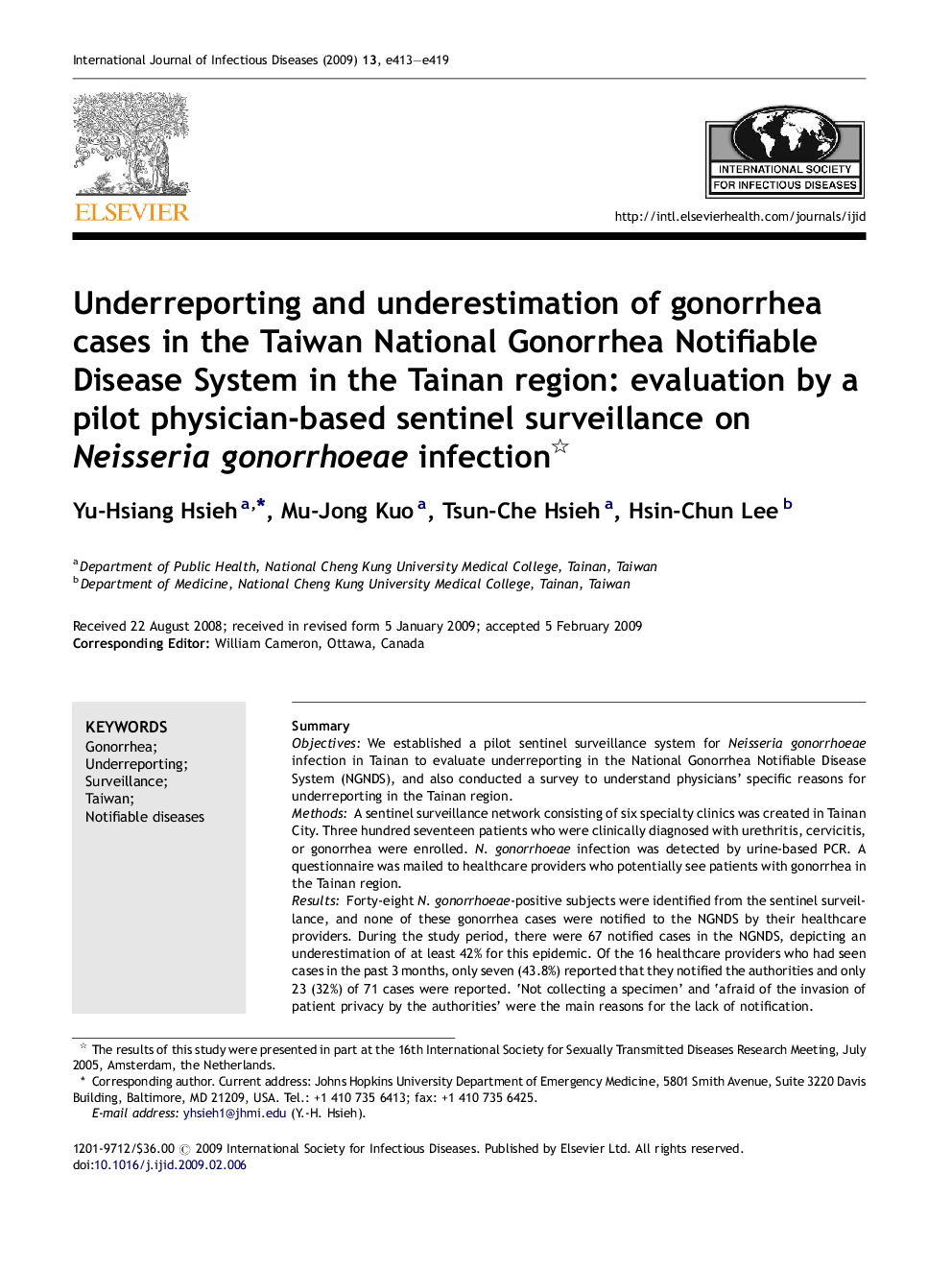| Article ID | Journal | Published Year | Pages | File Type |
|---|---|---|---|---|
| 3364527 | International Journal of Infectious Diseases | 2009 | 7 Pages |
SummaryObjectivesWe established a pilot sentinel surveillance system for Neisseria gonorrhoeae infection in Tainan to evaluate underreporting in the National Gonorrhea Notifiable Disease System (NGNDS), and also conducted a survey to understand physicians’ specific reasons for underreporting in the Tainan region.MethodsA sentinel surveillance network consisting of six specialty clinics was created in Tainan City. Three hundred seventeen patients who were clinically diagnosed with urethritis, cervicitis, or gonorrhea were enrolled. N. gonorrhoeae infection was detected by urine-based PCR. A questionnaire was mailed to healthcare providers who potentially see patients with gonorrhea in the Tainan region.ResultsForty-eight N. gonorrhoeae-positive subjects were identified from the sentinel surveillance, and none of these gonorrhea cases were notified to the NGNDS by their healthcare providers. During the study period, there were 67 notified cases in the NGNDS, depicting an underestimation of at least 42% for this epidemic. Of the 16 healthcare providers who had seen cases in the past 3 months, only seven (43.8%) reported that they notified the authorities and only 23 (32%) of 71 cases were reported. ‘Not collecting a specimen’ and ‘afraid of the invasion of patient privacy by the authorities’ were the main reasons for the lack of notification.ConclusionsThe underreporting of gonorrhea identified in this pilot is substantial. An overhaul of Taiwan's NGNDS that streamlines the reporting procedures and the requirement for laboratory confirmation, along with a continuing medical education program is warranted.
